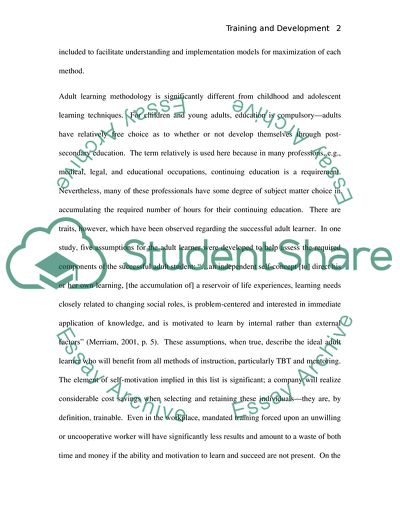Cite this document
(Training and Development: TBT and Mentoring Coursework Example | Topics and Well Written Essays - 1250 words - 1, n.d.)
Training and Development: TBT and Mentoring Coursework Example | Topics and Well Written Essays - 1250 words - 1. https://studentshare.org/education/1720531-training-and-development
Training and Development: TBT and Mentoring Coursework Example | Topics and Well Written Essays - 1250 words - 1. https://studentshare.org/education/1720531-training-and-development
(Training and Development: TBT and Mentoring Coursework Example | Topics and Well Written Essays - 1250 Words - 1)
Training and Development: TBT and Mentoring Coursework Example | Topics and Well Written Essays - 1250 Words - 1. https://studentshare.org/education/1720531-training-and-development.
Training and Development: TBT and Mentoring Coursework Example | Topics and Well Written Essays - 1250 Words - 1. https://studentshare.org/education/1720531-training-and-development.
“Training and Development: TBT and Mentoring Coursework Example | Topics and Well Written Essays - 1250 Words - 1”. https://studentshare.org/education/1720531-training-and-development.


